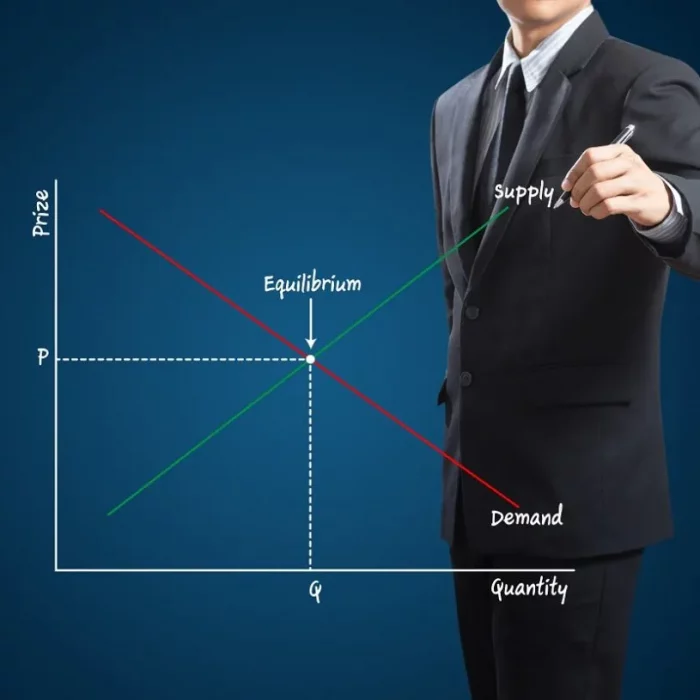
Understanding Producer’s Equilibrium
A firm refers to an economic entity which is used to employ factors of production so that the production of commodities which it sells to other people, could take place.
A firm largely buys the factor services from the various business activities as well as from the households and then uses these for the production of goods and services. The firm also helps to transform the input into outputs.
To produce goods and services, various firms which are operating in an economy are used to bring together different factors of production as in labor and capital. Some firms produce services while others produce goods like cloth, food, automobile, etc.
They create utility in goods and services. Thus, firms are considered to be the principal buyers of factor services and also the main producers of commodities.
A firm is said to be in equilibrium when it produces that particular level of output at which the profit is to be maximized, given the demand and cost conditions.
Firms’ equilibrium is a position where market demand is equal to market supply, the point shows maximization of profits. A producer is in equilibrium when it produces that level of output where its profits are being maximized. Similarly, consumers are in equilibrium when the utility is maximized.
Profits refers to the difference between the revenue which the firm is earning by selling its output and the cost which is required for producing that output. There are different types of profits that are required to be understood for help in homework, which are as follows:
- Normal profit:
Normal profits refer to the amount of profits which are high enough so as to maintain the position of the existing firm in the industry, still low enough so that it could prevent the entry of new firms into the industry. They are considered to be a part of cost of production and are also being included in the cost.
- Pure or economic profits:
In economics, pure profits or economic profits refer to the excess of revenue over costs (which includes normal profit).
Therefore, it implies that the firm earns only normal profits if revenue equals to cost whereas the firm earns pure or economic cost if revenue is in excess of costs. It is also known as super-normal profit. It is classified into two parts:
- Positive pure profits:
These are the profits which would attract the resource owners into the industry for earning high profits.
- Negative pure profits:
These are those profits which would convince the resource owners to move their resources to out.
It is also important to have an understanding of producer’s equilibrium through Marginal Revenue and Marginal Cost Approach, for effective assignment help: –
- A Rule to decide whether or not to Produce in the Short-run:
Even if the firm stops the production altogether, still it will have to incur fixed cost in the short-run. It is through these fixed costs, that we get to know why sometimes a firm continues to produce even when it is incurring losses.
The losses will equalize its fixed cost if a firm decides to close down and produce nothing. A profit-maximizing firm will never be in favor of losing more than its fixed cost.
The firm can avoid the prices which drop so low that the revenues are not in a position to meet variable costs, by ceasing production altogether. A shut-down situation arises when a firm does not produce any output to minimize its loss.
Since fixed costs are to be paid ignoring the fact that the firm is producing nothing, shut-down shows a loss which is equal to the fixed cost of the firm. Therefore, when the firm makes a decision whether to produce or not in the short-run, it is mandatory for it to compare the losses in two aspects – losses when the firm continues to produce and the losses in a situation of shut-down.
- A Rule that is necessary for profits to be maximum:
Once a firm has made a decision that it would be very profitable if it produces some output, then the question comes that how much a firm should produce.
Obviously, a firm would produce that amount of output which will help it to maximize its profits. Profit-maximization output is the one in which marginal revenue will be equal to marginal cost.
If there is a situation in which the cost of producing one more unit is not more than the additional revenue which is earned by selling that unit, it means that this additional unit which is produced adds more to profit.
Thus, is the marginal revenue is more than the marginal cost, the firm would be in a position to increase its profits by producing more. On the other hand, if the firm finds out that the cost of producing one more unit is more than the additional revenue which is earned by selling that unit,
it will signify that that additional unit which is produced will reduce the profits. Thus, if marginal cost is in excess of marginal revenue, the firm would be in a position to increase its profits by producing less.
- A Rule to ensure that the profits are maximized rather than minimized:
For profit-maximization, it is necessary that the marginal revenue is equal to marginal cost but is not a sufficient condition to ensure that the profits are maximized.
At some points, the equality between marginal revenue and marginal cost would tell us about the minimization of profits.
To ensure profit-maximization rather than profit-minimization in a situation of equality between the marginal revenue and marginal cost, it will be sufficient if we keep the marginal cost less than the marginal revenue at slightly lower output and marginal cost should be kept in excess of marginal revenue for slightly higher output.
Thus this was all about the concept of producer’s equilibrium, which the students need to understand for effective assignment help or help in homework in Economics.











